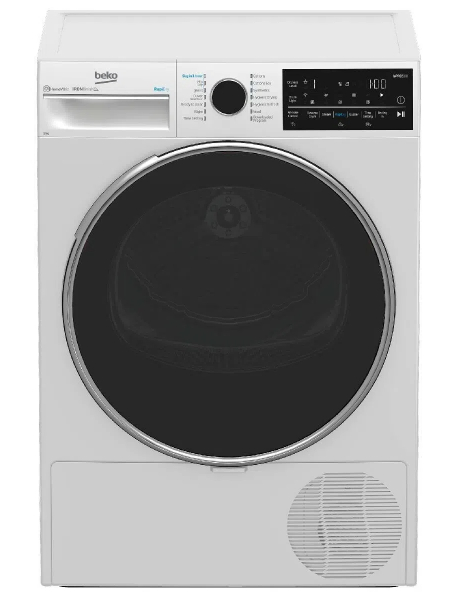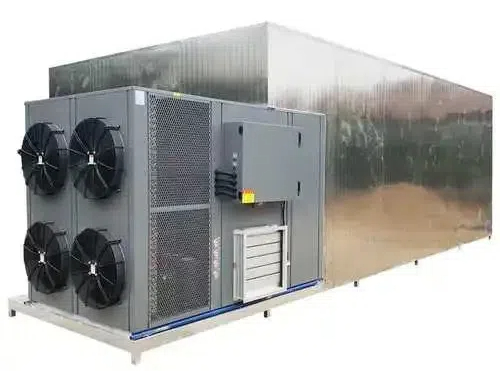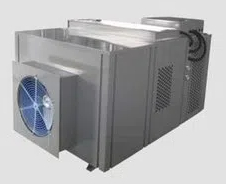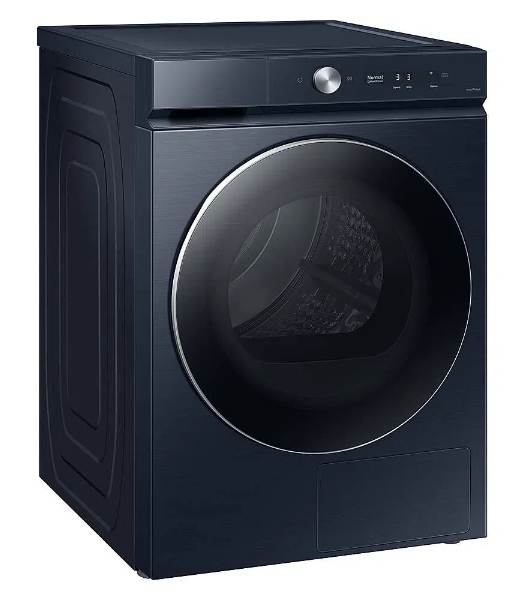
Content Menu
● Introduction to Hybrid Heat Pump Dryers
● Understanding Hybrid Heat Pump Dryer Technology
>> Traditional Dryers
>> Heat Pump Dryers
>> The Hybrid Approach
● How Hybrid Heat Pump Dryers Work
● Benefits of Hybrid Heat Pump Dryers
>> 1. Energy Efficiency
>> 2. Versatility
>> 3. Fabric Care
>> 4. Environmental Impact
>> 5. Cost Savings
● Smart Features in Hybrid Heat Pump Dryers
>> Intelligent Sensors
>> Wi-Fi Connectivity
>> Custom Cycles
>> Steam Functions
>> Eco Modes
● Comparing Hybrid Heat Pump Dryers to Other Types
>> Hybrid Heat Pump Dryers:
>> Traditional Vented Dryers:
>> Condenser Dryers:
>> Standard Heat Pump Dryers:
● Installation and Maintenance Considerations
>> Installation Requirements
>> Maintenance Tips
● Environmental Impact and Energy Ratings
● The Future of Laundry: Innovations in Hybrid Dryer Technology
>> Artificial Intelligence Integration
>> Improved Heat Exchange Systems
>> Sustainable Materials
>> Integration with Smart Home Ecosystems
● Conclusion: Is a Hybrid Heat Pump Dryer Right for You?
● Frequently Asked Questions
>> Q1: How much energy can I save with a hybrid heat pump dryer?
>> Q2: Are hybrid heat pump dryers suitable for all types of fabrics?
>> Q3: Do hybrid heat pump dryers require special installation?
>> Q4: How long do clothes take to dry in a hybrid heat pump dryer?
>> Q5: Are hybrid heat pump dryers more expensive to repair than traditional dryers?
Introduction to Hybrid Heat Pump Dryers
In the ever-evolving world of home appliances, laundry technology has taken a significant leap forward with the introduction of hybrid heat pump dryers. These innovative machines combine the best features of traditional dryers and heat pump technology, offering a solution that promises both efficiency and performance. But what exactly is a hybrid heat pump dryer, and how does it differ from conventional drying methods? This comprehensive guide will delve into the intricacies of hybrid heat pump dryers, exploring their technology, benefits, and impact on modern laundry practices.
Understanding Hybrid Heat Pump Dryer Technology
To fully appreciate the innovation behind hybrid heat pump dryers, it's essential to understand the basic principles of both traditional and heat pump drying methods.
Traditional Dryers
Conventional dryers typically use an electric heating element or gas burner to generate hot air, which is then circulated through the drum to dry clothes. This method is fast but can be energy-intensive and potentially harsh on fabrics.
Heat Pump Dryers
Heat pump dryers use a closed-loop heat exchange system to remove moisture from clothes. They operate at lower temperatures and recycle heat, making them more energy-efficient but often slower than traditional dryers.
The Hybrid Approach
Hybrid heat pump dryers combine these technologies, utilizing both a heat pump system and a traditional heating element. This combination allows for the benefits of both methods: the energy efficiency of a heat pump and the speed of a traditional dryer when needed.
How Hybrid Heat Pump Dryers Work
The operation of a hybrid heat pump dryer is a sophisticated process that leverages advanced technology to optimize drying efficiency:
1. Initial Phase: The dryer begins operation using the heat pump system, which extracts heat from the ambient air and uses it to warm the air inside the drum.
2. Moisture Extraction: As warm air circulates through the clothes, it picks up moisture. This moist air then passes through an evaporator, where it's cooled and dehumidified.
3. Heat Recycling: The extracted heat is not wasted but instead recycled back into the system through a condenser, further warming the air.
4. Adaptive Heating: If faster drying is required or the load is particularly heavy, the traditional heating element can be activated to boost drying power.
5. Smart Sensors: Throughout the process, sensors monitor the moisture levels and temperature, adjusting the cycle for optimal efficiency and fabric care.
This hybrid approach allows for a balance between energy efficiency and drying speed, adapting to the specific needs of each laundry load.
Benefits of Hybrid Heat Pump Dryers
Hybrid heat pump dryers offer a range of advantages that make them an attractive option for modern households:
1. Energy Efficiency
By primarily using heat pump technology, these dryers can achieve significant energy savings compared to traditional models. The ability to recycle heat and operate at lower temperatures contributes to reduced energy consumption.
2. Versatility
The hybrid system allows users to choose between energy-saving modes and faster drying cycles, providing flexibility to meet different laundry needs.
3. Fabric Care
Lower operating temperatures and moisture-sensing technology help protect clothes from over-drying and heat damage, potentially extending the life of garments.
4. Environmental Impact
Reduced energy consumption translates to a lower carbon footprint, making hybrid heat pump dryers an eco-friendly choice for environmentally conscious consumers.
5. Cost Savings
While the initial investment may be higher, the long-term energy savings can lead to reduced utility bills over the life of the appliance.

Smart Features in Hybrid Heat Pump Dryers
Many hybrid heat pump dryers come equipped with advanced features that enhance their functionality and user experience:
Intelligent Sensors
These dryers often include multiple sensors that detect moisture levels, temperature, and even the type of fabric being dried. This information is used to automatically adjust the drying cycle for optimal results.
Wi-Fi Connectivity
Some models offer smart home integration, allowing users to control and monitor their dryer remotely through smartphone apps. This can include features like cycle notifications, energy usage tracking, and even the ability to start or stop cycles from afar.
Custom Cycles
Advanced programming options allow users to create and save custom drying cycles tailored to specific types of loads or personal preferences.
Steam Functions
Many hybrid models incorporate steam technology for wrinkle reduction, odor removal, and sanitization of clothes.
Eco Modes
Dedicated eco-friendly settings optimize energy usage for the most efficient drying possible, often extending cycle times but significantly reducing energy consumption.
Comparing Hybrid Heat Pump Dryers to Other Types
To better understand the position of hybrid heat pump dryers in the market, let's compare them to other common dryer types:
Hybrid Heat Pump Dryers:
- Combine heat pump and traditional heating technologies
- Offer a balance of energy efficiency and drying speed
- Higher initial cost but potential for long-term savings
- Versatile with multiple drying options
Traditional Vented Dryers:
- Fastest drying times
- Less energy-efficient
- Require external venting
- Lower upfront cost
Condenser Dryers:
- No need for external venting
- Moderate energy efficiency
- Can be installed in various locations
- May struggle in high-humidity environments
Standard Heat Pump Dryers:
- Most energy-efficient
- Longer drying times
- Gentlest on clothes
- Higher upfront cost

Installation and Maintenance Considerations
When considering a hybrid heat pump dryer, there are several factors to keep in mind regarding installation and maintenance:
Installation Requirements
- Adequate Space: Hybrid models may be larger than traditional dryers and require more clearance for proper ventilation.
- Power Supply: Most require a 220-240V electrical connection.
- Drainage: While some models have a water tank, many can be connected directly to a drain for convenience.
Maintenance Tips
1. Clean lint filters after every use to maintain efficiency and prevent fire hazards.
2. Regularly clean the heat exchanger (typically every 20-30 cycles) to ensure optimal performance.
3. Check and clean the condenser unit as recommended by the manufacturer.
4. Wipe down the drum and door seal periodically to prevent mold and mildew growth.
5. Schedule professional maintenance annually to address any potential issues and ensure longevity.
Environmental Impact and Energy Ratings
Hybrid heat pump dryers are often marketed as eco-friendly appliances, and for good reason. Their energy-efficient operation can significantly reduce a household's carbon footprint compared to traditional dryers. Many models boast high energy ratings, such as A+++ on the European energy label scale, indicating superior efficiency.
When shopping for a hybrid heat pump dryer, pay attention to energy labels and certifications such as ENERGY STAR in the United States. These ratings can provide valuable information about the appliance's energy consumption and potential cost savings over time.
The Future of Laundry: Innovations in Hybrid Dryer Technology
As technology continues to advance, we can expect to see further innovations in hybrid heat pump dryers:
Artificial Intelligence Integration
Future models may incorporate AI to learn from user habits and optimize drying cycles automatically, further improving efficiency and convenience.
Improved Heat Exchange Systems
Advancements in heat exchange technology could lead to even more efficient heat recovery and faster drying times.
Sustainable Materials
Manufacturers may focus on using more recycled and sustainable materials in the construction of these appliances, further reducing their environmental impact.
Integration with Smart Home Ecosystems
Enhanced connectivity features could allow hybrid dryers to work seamlessly with other smart home devices, optimizing energy usage across the entire household.
Conclusion: Is a Hybrid Heat Pump Dryer Right for You?
Hybrid heat pump dryers represent a significant advancement in laundry technology, offering a compelling balance between energy efficiency and performance. While they may come with a higher upfront cost, the potential for long-term energy savings and improved fabric care make them an attractive option for many households.
When considering whether to invest in a hybrid heat pump dryer, weigh factors such as your laundry habits, energy costs, and environmental concerns. For those who prioritize both efficiency and flexibility in their laundry routine, a hybrid model could be the ideal solution.
As with any major appliance purchase, it's essential to research specific models, read reviews, and consider your individual needs before making a decision. With their innovative technology and potential benefits, hybrid heat pump dryers are certainly worth considering for anyone looking to upgrade their laundry setup and reduce their environmental impact.

Frequently Asked Questions
Q1: How much energy can I save with a hybrid heat pump dryer?
A1: Energy savings can be substantial with a hybrid heat pump dryer, potentially up to 50% compared to traditional vented dryers. However, the exact savings depend on various factors, including usage patterns, local energy costs, and the specific model. Many users report noticeable reductions in their energy bills after switching to a hybrid heat pump dryer.
Q2: Are hybrid heat pump dryers suitable for all types of fabrics?
A2: Hybrid heat pump dryers are generally suitable for a wide range of fabrics due to their ability to operate at lower temperatures. They often come with multiple fabric-specific settings, making them safe for everything from delicates to heavy-duty items. However, always check garment care labels and use the appropriate cycle for each fabric type to ensure the best results and protect your clothes.
Q3: Do hybrid heat pump dryers require special installation?
A3: While hybrid heat pump dryers don't typically require special installation, they may have different requirements compared to traditional dryers. Most don't need external venting, which offers more flexibility in placement. However, they do require adequate space for proper air circulation and may need a direct drain connection or regular emptying of a water reservoir. It's best to consult the manufacturer's guidelines and consider professional installation to ensure optimal performance.
Q4: How long do clothes take to dry in a hybrid heat pump dryer?
A4: Drying times in a hybrid heat pump dryer can vary depending on the load size, fabric type, and selected cycle. Generally, when using the heat pump mode, drying times may be longer than traditional dryers, potentially taking 1.5 to 2 hours for a full load. However, the hybrid feature allows for faster drying when needed by activating the traditional heating element, which can significantly reduce drying times to be more comparable with conventional dryers.
Q5: Are hybrid heat pump dryers more expensive to repair than traditional dryers?
A5: Hybrid heat pump dryers can be more complex than traditional dryers due to their advanced technology, which may result in higher repair costs if issues arise. However, they are designed to be durable and efficient, potentially requiring fewer repairs over their lifetime. Regular maintenance, such as cleaning filters and following manufacturer guidelines, can help prevent many common issues. When considering the overall cost, it's important to factor in the potential energy savings and longer lifespan of these appliances.












